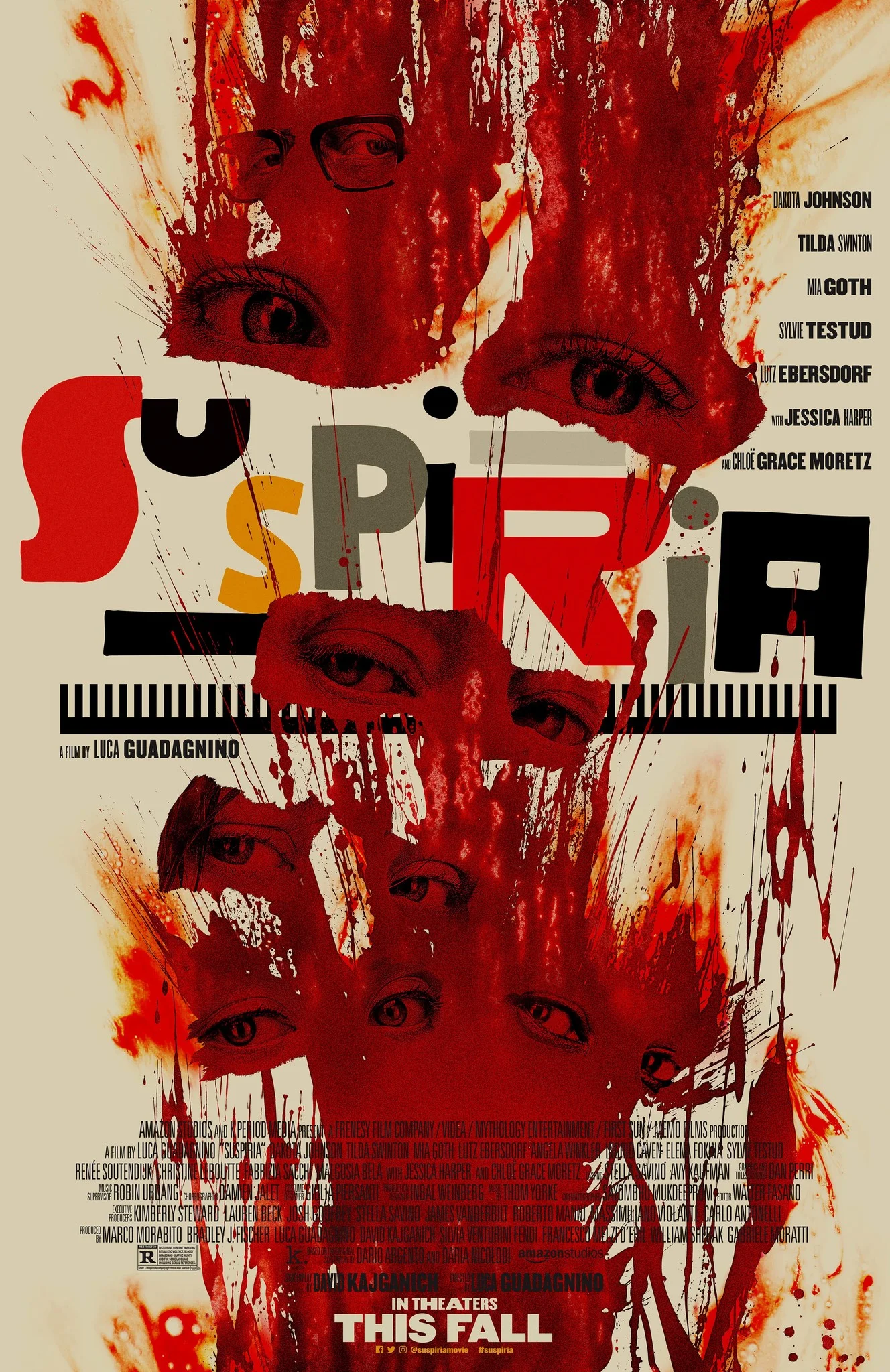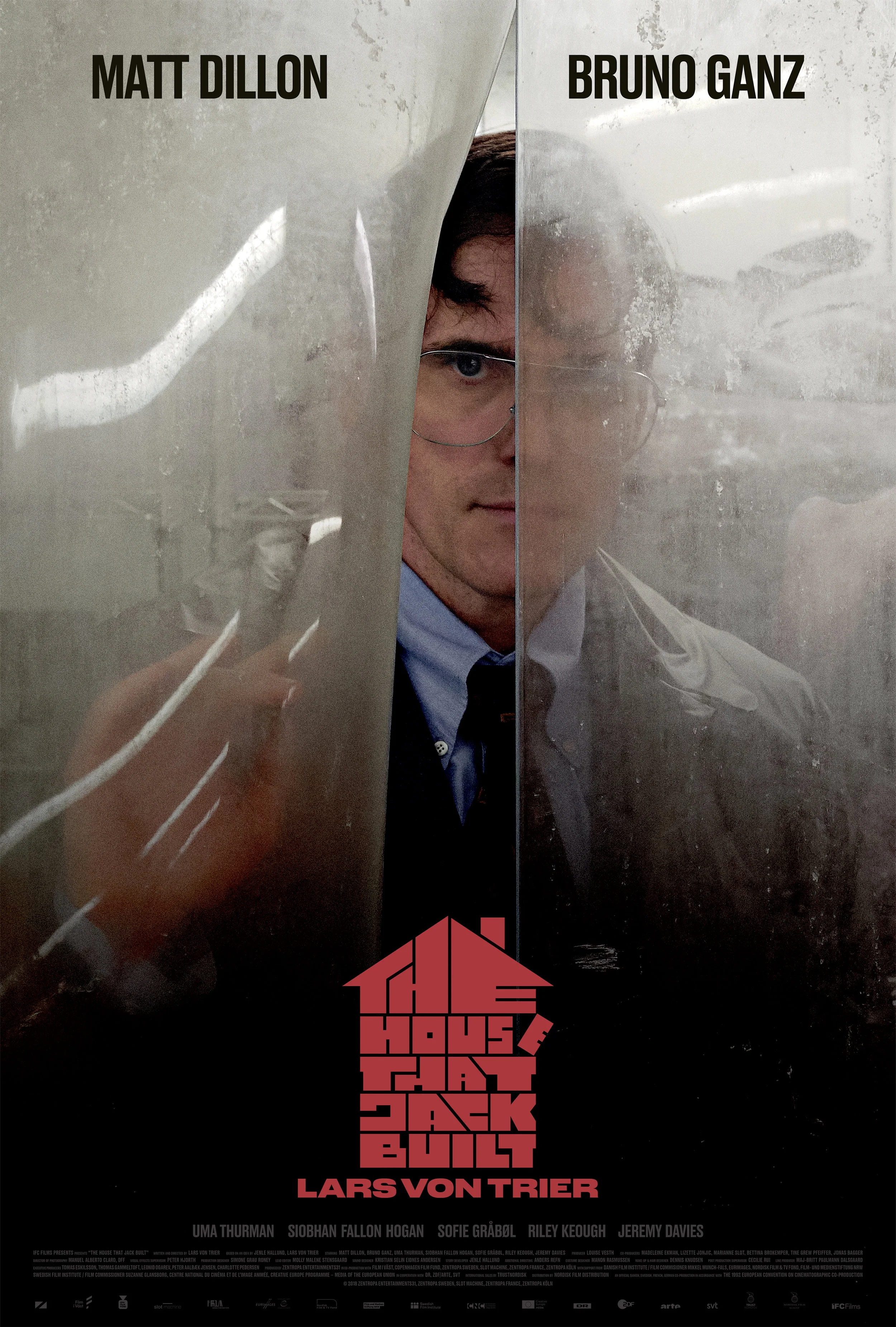Suspiria
I love Dario Argento’s Suspiria. Everything about it. The colors. The style. The music. The nonsensical plotting. The bat killing. It’s a fun movie that has cast its own type of spell on viewers for over 40 years. And it continues to gain new fans, particularly after its glorious 4k restoration completely changed the way we saw and heard it. To a lot of people, it’s a holy grail that should never be tampered with. And yet, 41 years later, another Italian, this time by the name Luca Guadagnino, has taken the story and turned it into a completely different kind of beast. One that eschews virtually everything that made the original so striking. One that is almost double the length of the original and incredibly more dense. One that’s as, if not more, divisive.
Luca’s Suspiria is presented as a story in six acts and an epilogue. The narrative begins with Dr. Josef Klemperer, a psychologist who is currently helping a young woman named Patricia (Chloë Grace Moretz), a member of the Markos Dance Academy in West Berlin. Patricia’s in the midst of a breakdown. She hears music in her head. She’s paranoid. She insists the academy is actually a coven of witches, who want to get inside her. Dr. Klemperer writes down “delusions” in his notebook.
Then we meet Susie Bannion (Dakota Johnson), a Mennonite from Ohio who’s been dying to get into the Markos Academy and has her chance when Patricia suddenly vanishes. Though inexperienced, she somehow attracts the eye of Madame Blanc (Tilda Swinton) and she gets in. Our third focal point is Sara (Mia Goth), a star pupil who becomes increasingly sure that there is something devious going on in the dance academy.
Up front, it’s immediately established that, yes, the academy is run by a coven of witches. Not long after Susie’s arrival, the matrons hold an election to determine who is to serve as the new leader. The vote is between Madame Blanc and Helena Markos, the current leader. Markos wins, but there is trouble within the coven and before all is said and done, the Markos Dance Academy will never be the same.
I remember reading an interview with Luca about his previous masterpiece Call Me By Your Name, in which he described wanting the cinematography (by Sayombhu Mukdeeprom) to reflect water. Scenes drifted into each other, never quite ending. It felt like a summer fantasy, as if each moment were part of the previous moment. It flowed effortlessly through an entire summer. As if it’s Elio, now much older, looking back and fantasizing about the summer he came of age.
Suspiria is like the reverse of this. Suspiria reminds me of the wind, in its unpredictability and dizzying sharpness. Utilizing the same cinematographer, Luca unsettles viewers with sudden image changes and swooping camera shots. Take the opening scene in Dr. Klemperer’s office. As Patricia waltzes through the room, the camera doesn’t languish on her or the action. It focuses on a book. The wall. A picture. A chair. The Doctor’s notebook. The movements are sudden, disorienting. It instills a feeling of unease and off-balances the viewer.
Complementing the cinematography is a luscious and eerie, if muted, score by Thom Yorke. Yorke takes the opposite approach of the original Suspiria. Instead of bombastic Goblin guitars, with shouts of “witch!", it slinks in the background; lowkey and atmospheric. When the music combines with the fast moving and unfocused camera movements, it creates an upsetting dichotomy. A dissonance. It also feels appropriate for a film about Mother Suspiriorum, the Mother of Sighs. Consider the wheezes of Susie’s dying mother. The gasps the dancers make. The wheezes from a certain witch. They become one with the soundtrack and evoke the very nature of Suspiria.
Furthering the dissonance is writer David Kajganich’s unwillingness to focus on one character or plot thread. The narrative changes perspectives constantly, from Dr. Klemperer’s struggles outside the academy, to Susie’s inward journey inside, to Sara’s investigative nature to even Madame Blanc, struggling with her place in the coven, post vote. The risk inherent in this structure is that we aren’t given one protagonist to follow. Sure, Susie is ostensibly our hero, but the points of view constantly change to the point that it’s uncertain who the villains or the heroes truly are, until the denouement. And even then, it’s a little uncertain.
Suspiria is dense. At times, the disparate themes almost seem at odds with each other. But there are clues, if you look for them. Think about the setting, smack dab during the German Autumn. It’s kind of an inspired choice. The country outside is falling apart while the community inside the academy is equally having a struggle of direction. Luca and David contrast the two separate actions, showing their similarities, as well as their discrepancies. While Germany is dealing with the remnants of The Reich outside, internal forces are equally vying for control inside the academy. The kidnappings outside become a metaphor for the women inside, captive to dance, magic and worse. In both narratives, a regime change is brewing.
This theme is further examined by the power dynamics inside the academy. Some have critiqued Suspiria as being fearful of women with power. But by contrasting the turmoil outside the academy with the horror inside, I believe it’s more concerned with the corruption of absolute power than gender politics. In the academy, as well as Germany, the powerful are preying on the weak. Instead of helping guide the future, those in power are more interested in maintaining the broken status quo.
This connection is brought home by the inclusion of Dr. Klemperer’s story, who bookends the narrative. The idea of “delusion” is mentioned multiple times during the movie, by different people. At one point, a witch chastises a man by screaming, "When women tell you the truth, you don't pity them. You tell them they have delusions!” But during Dr. Klemperer’s conversation with Sara, I believe one of the bigger themes comes to light. He tells her, “You can give someone your delusion. That is religion. That was the Reich.” The unspoken conclusion to this is, “that’s what’s happening inside the Markos Dance Academy.”
Of course, you can pull these individual themes, isolate them from each other, and draw whatever conclusion you like. Critics today are divided on whether this is a masterpiece or pretentious shit. On whether it’s feminist or not. Or what it’s really trying to say. And that’s ultimately the problem with the way we interact with film criticism. Readers want critics to make sense of a story immediately, without giving thought that some stories need to percolate and linger in the mind. Sometimes, it’s not until much later that we can even objectively look at a piece of art.
I’ll leave you with one last thought.
In 1982, John Carpenter took the novella Who Goes There? as inspiration for his pseudo remake of The Thing from Another World. The classic that resulted from this was a special effects masterpiece of cinema that, among other things, examined cold war fears enveloping the United States. Or at least it would become so. But at the time, it was trashed. Magazines, genre and mainstream, proclaimed it a terrible movie; potentially the worst ever made. Over the years, as people started to realize what Carpenter was going for, they began to examine it with fresh eyes. Separated by years, it was easier to look at the film in the context of the time and its strengths shined through. It’s since been deemed a classic and heralded as one of the best horror remakes ever made.
And that’s because some films need that space to grow. Instant and gut opinions can be wrong. We’re too close to the subject matter. I have a feeling Suspiria is similar. Like The Thing or The Fly, it starts with the basic structure of Argento’s classic. There’s a dance academy. Susie is our protagonist. There’s witches. Secret rooms. Step counting. An investigation. Markos. But, as Cronenberg did with The Fly and Carpenter with The Thing, Luca explodes the narrative.
He rips it open and shows us the dark, gaping mouth wheezing inside.







